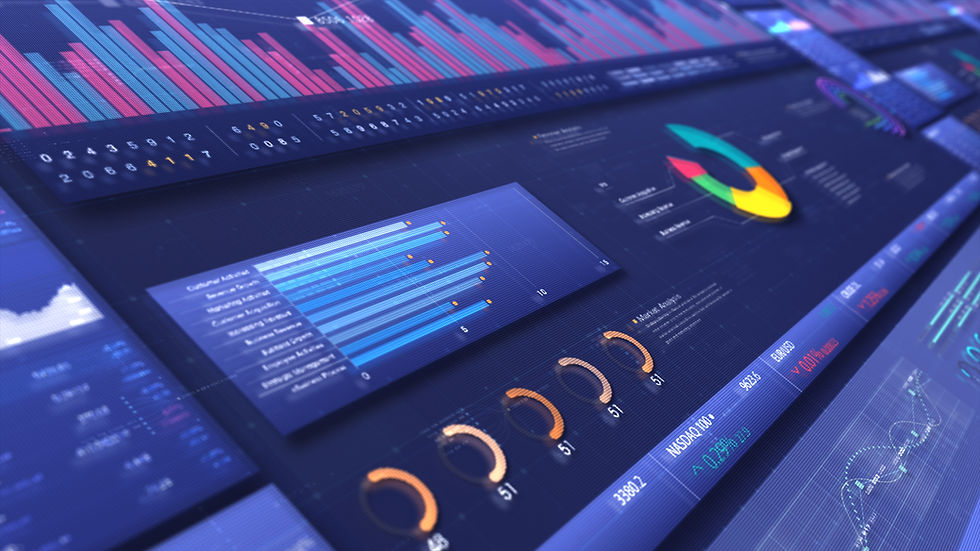Predictive Analytics Isn’t Just for Big Tech — Here’s How Small Teams Win With It
- An Dang
- Jul 6
- 3 min read
Updated: Oct 5
When most people hear the phrase predictive analytics, they picture big tech giants with armies of data scientists crunching numbers in futuristic offices. But the truth is: you don’t need a massive budget or a PhD to predict what’s coming next in your business. In fact, small teams are already using predictive analytics to stay ahead—by anticipating trends, optimizing workflows, and making proactive decisions that drive real results. Here’s how.
Understanding Predictive Analytics
Predictive analytics uses data, statistical models, and machine learning to identify patterns and forecast future outcomes. Put simply, it helps you answer questions like:
“Which leads are most likely to convert?”
“When will demand spike?”
“Which customers are likely to churn?”
“What will sales look like next month?”
And it does this not with guesswork—but with data-backed probabilities.
How Small Teams Are Using Predictive Analytics Right Now
1. Sales Forecasting
Use historical sales data to predict next month’s revenue. Adjust your strategy in advance if targets look off track.
2. Customer Churn Prevention
Spot which clients are showing early signs of disengagement. Take action before it’s too late.
3. Inventory Optimization
Forecast demand spikes and slowdowns. This ensures you’re never over- or under-stocked.
4. Marketing Campaign Targeting
Use past campaign data to predict which audiences are most likely to respond. Spend your budget wisely.
5. Staffing & Resource Planning
Predict seasonal workload changes. Make sure you have the right team in place—without over-hiring.
But Don’t You Need a Data Science Team for This?
Not anymore. Thanks to tools like Power BI, Google Cloud AutoML, BigQuery, and pre-built machine learning models, predictive analytics is accessible to non-technical teams. With the right partner (like Purdie Analytics), you can:
Build models tailored to your business
Connect them to your existing dashboards
Turn predictions into automated actions using AI agents
No PhD required.
Real-World Example
A growing e-commerce team used predictive analytics to identify when customers were likely to reorder. They triggered automated reminder emails.
The result?
A 27% lift in repeat purchases within 60 days.
Why This Matters More Than Ever
In fast-moving markets, reactive decision-making is too slow. Small teams don’t have room for wasted time or resources—and that’s exactly why predictive analytics gives them a strategic edge. When you can anticipate what’s next, you can:
Prioritize better
Serve customers faster
Grow without guessing
The Future of Predictive Analytics
As technology evolves, predictive analytics will become even more integral to business strategy. Companies that embrace this shift will find themselves ahead of the competition. The ability to predict trends and behaviors will not only streamline operations but also enhance customer satisfaction.
Embracing Change
Change can be daunting. But adopting predictive analytics is a step toward a smarter, more efficient business. It’s about leveraging data to make informed decisions.
Building a Data-Driven Culture
To fully benefit from predictive analytics, cultivate a data-driven culture within your organization. Encourage team members to embrace data in their decision-making processes. This shift can lead to innovative solutions and improved outcomes.
Conclusion
Predictive analytics is not just for the tech giants anymore. It’s a powerful tool that small teams can leverage to enhance their operations and decision-making.
Want to Predict, Not Just React?
Let’s show you how predictive analytics can give your team the edge—no data science degree required. 👉 Book a Strategy Session
With the right approach, you can simplify complex technology to boost efficiency, cut costs, and make smarter decisions. Predictive analytics is your ally in driving real, measurable results for your business.






Comments